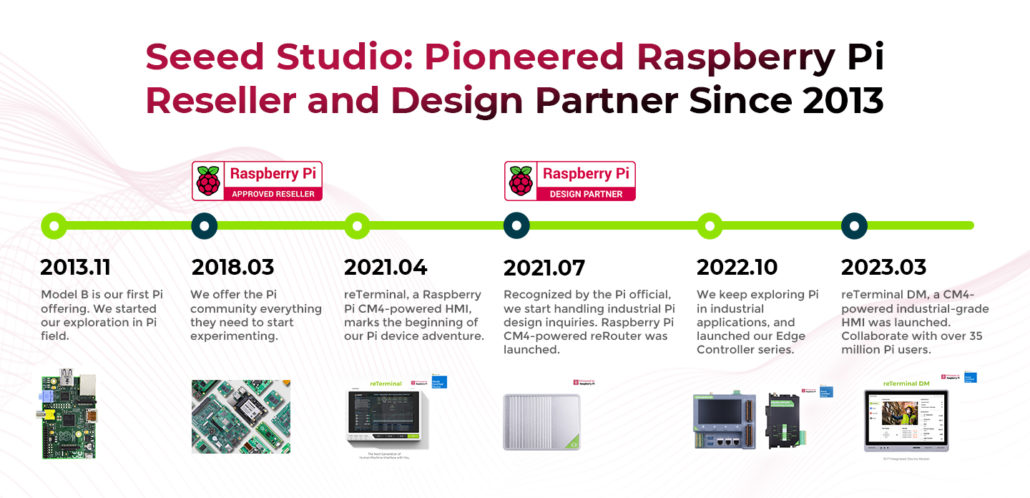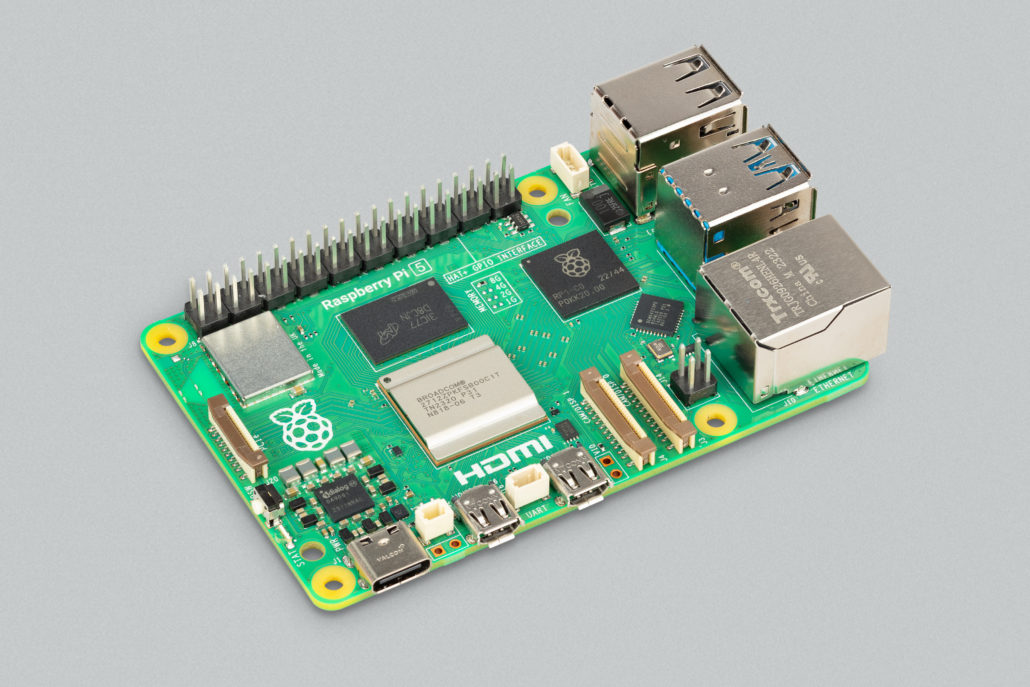Introduction
After a long five-year wait, the Raspberry Pi 5 is finally on the horizon, and enthusiasts are eager to get their hands on this new iteration of the beloved single-board computer. Raspberry Pi, often referred to as RPI or RP, has consistently held its position as a go-to choice for affordable and versatile computing solutions. Since its debut back in 2012 with the original Model B sporting a single-core ARM processor and 256MB of RAM, it has seen significant evolution. Variants like the energy-efficient Model A and the performance-boosted Pi 2 with a quad-core processor followed. The Pi 3 introduced built-in Wi-Fi and Bluetooth, and in 2019, the Pi 4B brought substantial improvements, including up to 8GB of RAM and USB-C power. Now, as we anticipate the Raspberry Pi 5’s arrival, it’s the perfect time to compare it to the preceding Raspberry Pi 4 and explore the innovations it brings to the table.
However, many Raspberry Pi enthusiasts and players will definitely have a question popping up in their minds: Should I buy it? Why should I choose it over other boards, for example, if I have got a Raspberry Pi 4, should I still buy a Raspberry Pi 5? Is it worth buying?
In this article, we will go through the comparison between Raspberry Pi 4 and Raspberry Pi 5. And let you know how the Raspberry Pi is upgraded.
Raspberry Pi 5 VS Raspberry Pi 4
Here below is an overview of the comparison between Raspberry Pi 5 and Raspberry Pi 4.
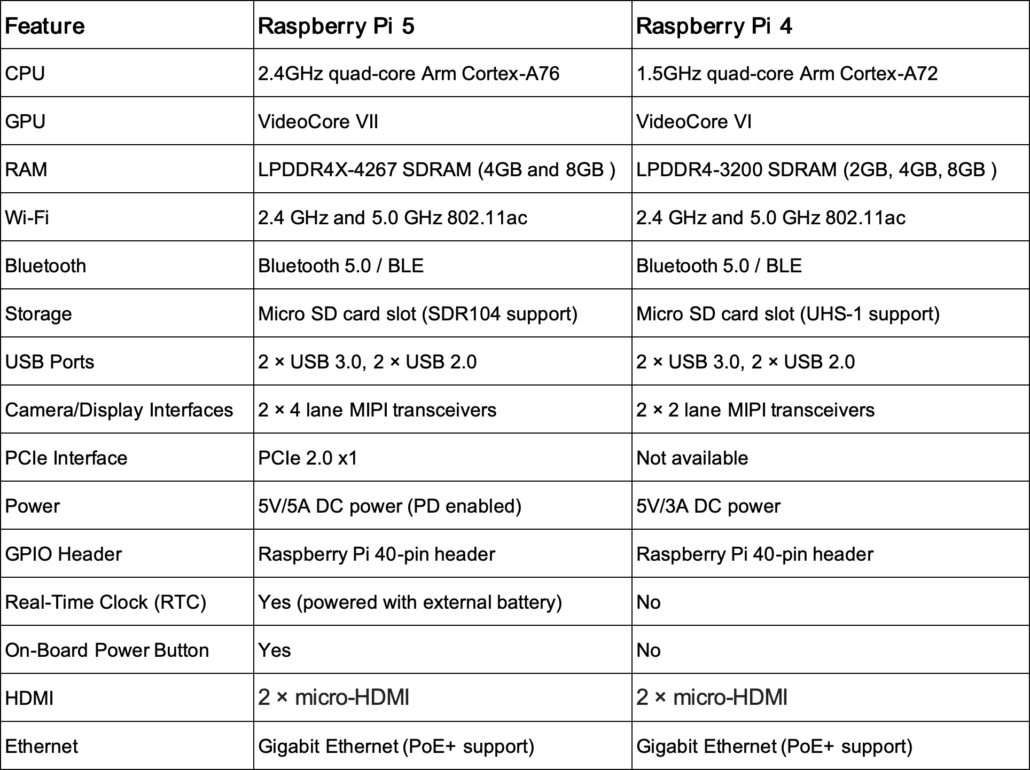
Performance
The Raspberry Pi 5 marks a significant leap in processor performance when compared to its predecessor, the Raspberry Pi 4. This improvement is driven by its 2.4GHz quad-core Arm Cortex-A76 CPU with 512KB L2 caches and a 2MB shared L3 cache. In contrast, the Raspberry Pi 4 features a quad-core Cortex-A72 CPU running at 1.5GHz with 1MB L2 cache and 32KB L1 cache. The Cortex-A76 architecture, combined with the higher clock speed, positions the Raspberry Pi 5 as a powerhouse, delivering superior performance for both single-threaded and multi-threaded computing tasks. Its enhanced processing capabilities translate to more power-efficient and faster experiences, especially in quantized machine-learning models. Additionally, the Raspberry Pi 5 consumes less power compared to the Raspberry Pi 4, making it an attractive choice for energy-conscious applications.
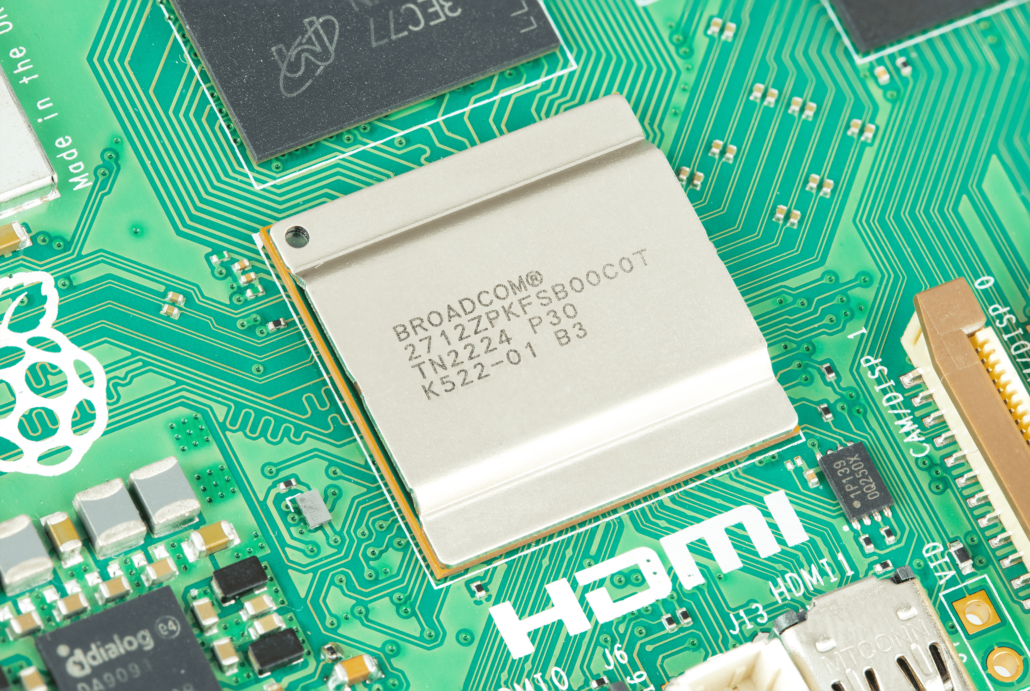
The Raspberry Pi 5 features LPDDR4X-4267 SDRAM, available in 4GB and 8GB SKUs, while the Raspberry Pi 4 is equipped with LPDDR4-3200 SDRAM, offered in 2GB, 4GB, and 8GB SKUs. The key differentiator here is the memory type and speed. LPDDR4X in the Raspberry Pi 5 is a more recent and faster memory technology compared to LPDDR4 in the Raspberry Pi 4. This means that the Raspberry Pi 5 has a significant advantage in memory bandwidth and data transfer rates, making it better suited for memory-intensive tasks, multitasking, and applications that require higher memory performance. Users seeking enhanced memory capabilities will find the Raspberry Pi 5’s LPDDR4X-4267 SDRAM a notable improvement over the Raspberry Pi 4’s LPDDR4-3200 SDRAM.
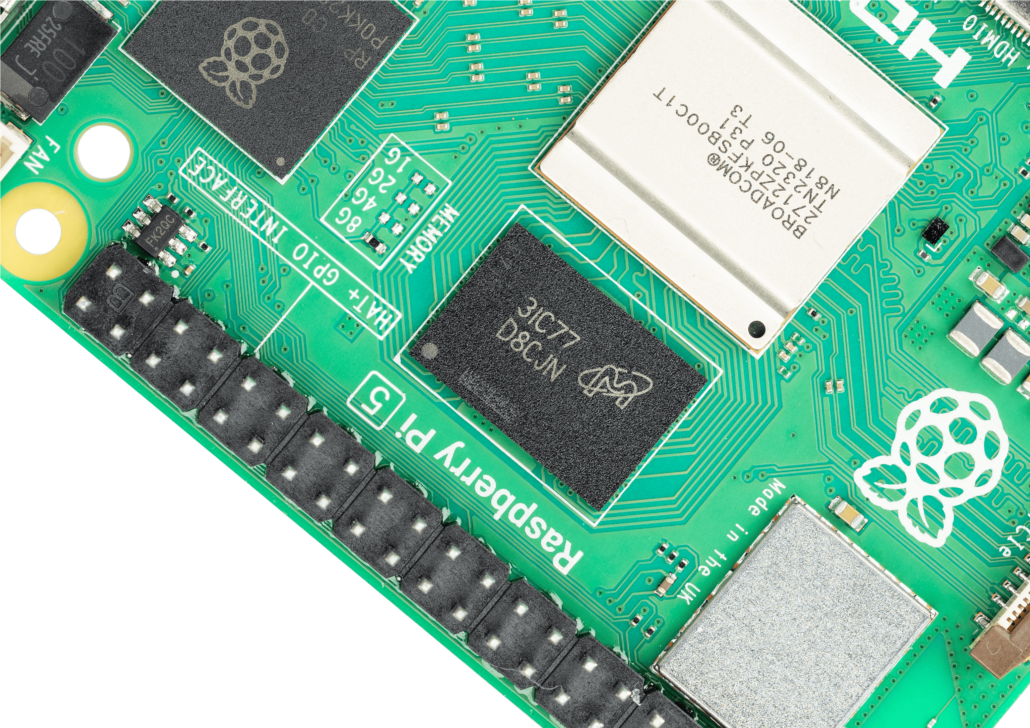
Interfaces
The Raspberry Pi 5 represents a remarkable evolution in connectivity compared to its predecessor, the Raspberry Pi 4. Both models stand out with dual 4Kp60 display output capabilities over HDMI, offering an exceptional visual experience for both consumers and industrial users. Furthermore, both devices feature two USB 3.0 ports, providing the advantage of simultaneous 5Gbps operation.
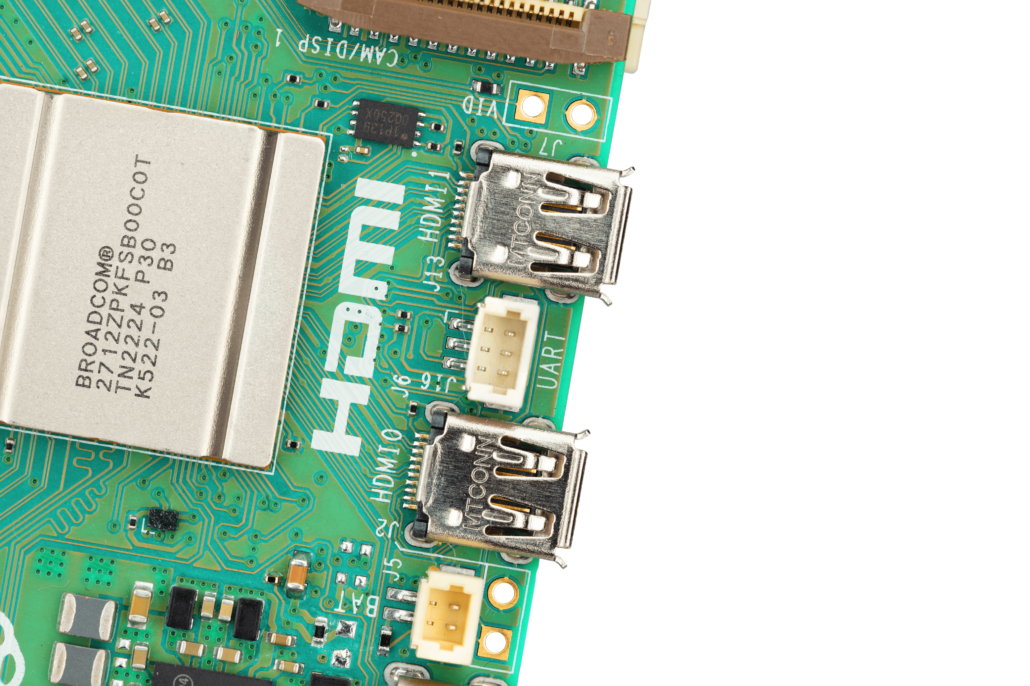
A significant enhancement comes with the replacement of the dedicated two-lane 1Gbps MIPI camera and display interfaces present on earlier models. Instead, both the Raspberry Pi 4 and Raspberry Pi 5 now boast a pair of four-lane 1.5Gbps MIPI transceivers. This upgrade triples the total bandwidth, allowing for greater flexibility in supporting any combination of up to two cameras or displays. Notably, the Raspberry Pi 5’s unique feature is its two four-lane MIPI connectors that support both camera and display connections, utilizing a specialized 22-way, 0.5mm-pitch “mini” FPC format.
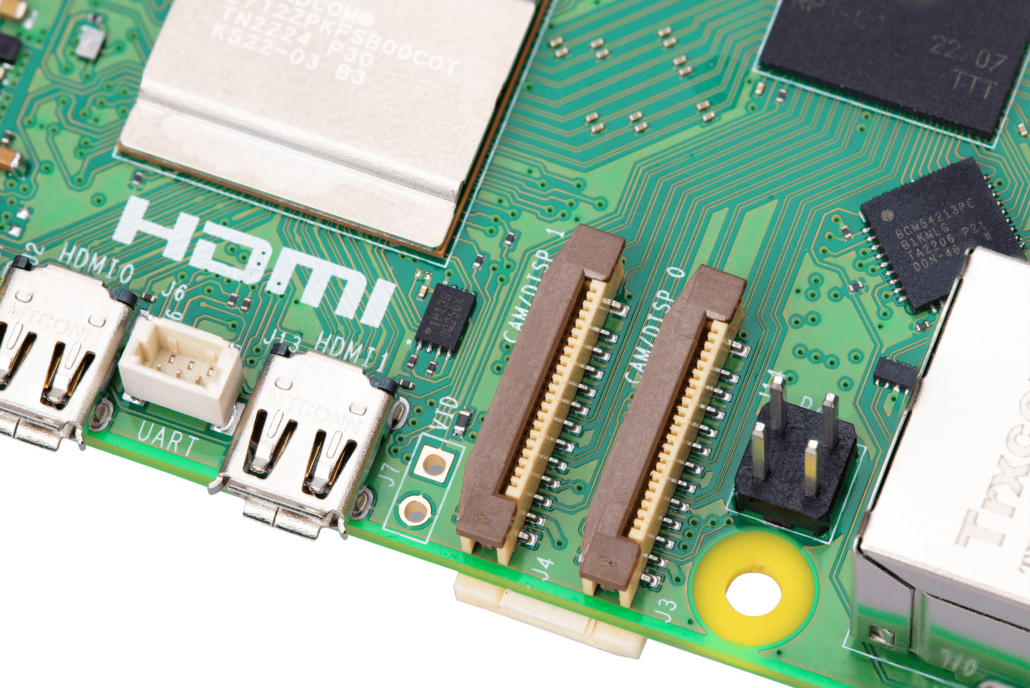
The Raspberry Pi 5 introduces a new feature not found in the Raspberry Pi 4: the M.2 HAT. This innovative accessory enables the connection of M.2-format PCIe and NVMe devices directly to the PCIe FPC connector on the Raspberry Pi 5. This enhancement offers users expanded storage options and the potential for higher-speed data transfer, making the Raspberry Pi 5 an even more versatile and powerful computing platform.
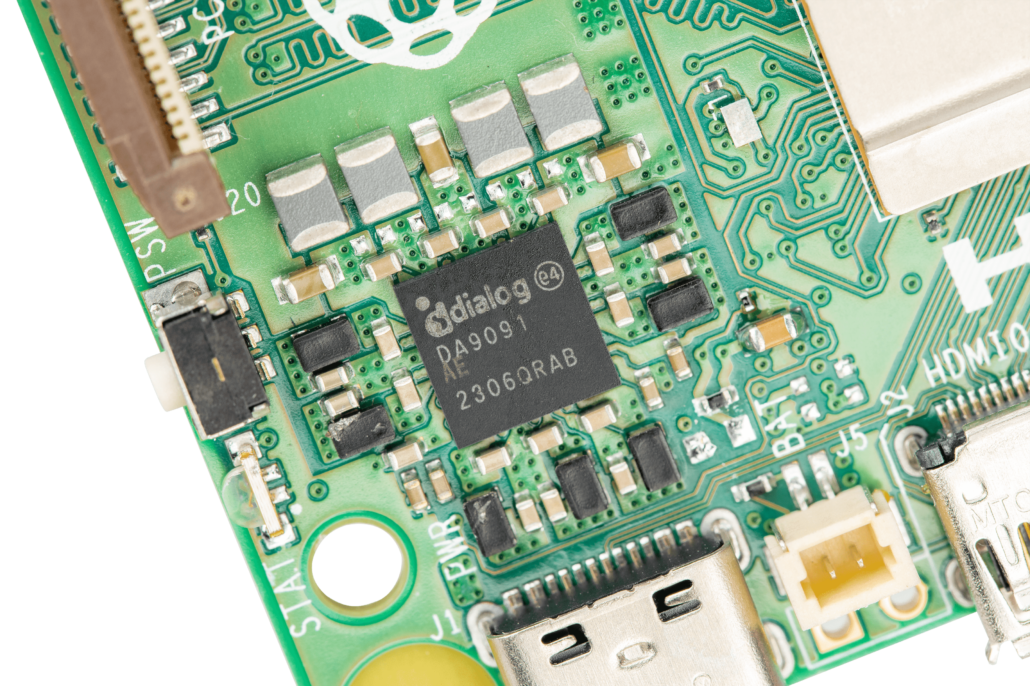
These impressive connectivity enhancements are made possible by the RP1 I/O controller chip, marking a significant milestone as it represents the first inclusion of Raspberry Pi-designed silicon in a flagship product. This underscores the Raspberry Pi 5’s dedication to providing advanced interfacing capabilities and expanding its potential for various applications.
Price
Indeed, the Raspberry Pi 5 offers more performance and additional features compared to the Raspberry Pi 4, with the 4GB RAM variant priced at $60.00 and the 8GB version at $80.00, just a $5.00 difference from the Raspberry Pi 4 counterparts. This minimal price gap makes upgrading to the Raspberry Pi 5 an attractive choice for users seeking enhanced capabilities and versatility without a significant budgetary increase.
Cooling
The Active Cooler for the Raspberry Pi 5 offers an innovative cooling solution, especially beneficial for users who intend to push their Pi to its limits under sustained heavy loads without an enclosure. This cooler combines a substantial metal heatsink with a variable-speed blower, which is powered and controlled through the fan connector, effectively dissipating heat. It securely attaches to the Raspberry Pi 5 PCB using sprung pins that fit into dedicated mounting holes. The Raspberry Pi 5 released this cooling solution as an accessory, not built into the board itself.
Conclusion
In a nutshell, the Raspberry Pi 5 offers a significant performance boost, with CPU speeds 2-3 times faster than its predecessor, the Raspberry Pi 4. This improvement, coupled with enhanced GPU capabilities, makes it a powerhouse for various computing tasks.
Despite its substantial performance gains, the Raspberry Pi 5 remains budget-friendly, with prices just slightly higher than the Raspberry Pi 4. This cost-effectiveness, combined with innovative features like the Active Cooler for efficient cooling and improved connectivity options, solidifies its position as a top choice for hobbyists and enthusiasts looking for a versatile and affordable single-board computer. The Raspberry Pi 5’s commitment to delivering more speed and features without breaking the budget makes it a standout option in the SBC market.
Seeed Studio's Raspberry Pi Ecosystem

Seeed Studio has been serving the Raspberry Pi user community since 2013 and took the lead to join the approved reseller and design partner. Since the first version of reTerminal in 2021, we have a series of products including reRouter, edge controller series, and this year reTerminal DM, serving creators, makers, enthusiasts, students, engineers, enterprises as well as industries, and every scenario needing Raspberry Pi.
